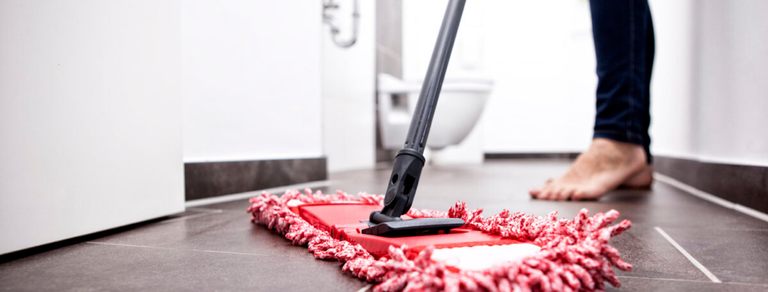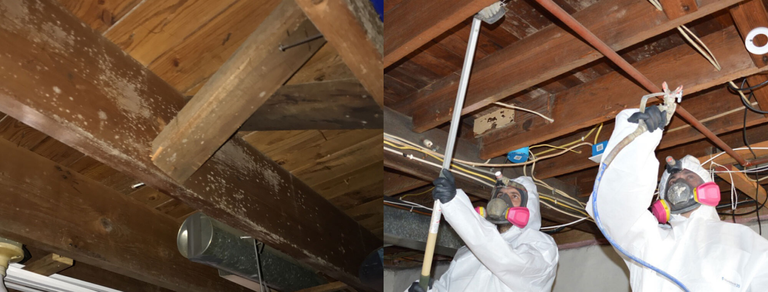.png)
Flood Damage Repair: Complete Checklist
The damage a flood can cause to a business or building can be devastating, as it is expensive. It can take up to $10,000 to restore the flooded basement of a property.
According to the National Flood Insurance Program’s flood damage simulator, 1-4 inches of water can cause up to $7,800 in flood damage. For 9-12 inches, the estimated damage is $18,930, and it takes about $26,285 to repair the aftermath of 18 inches of water.
Act Quickly
How you handle the first 24 hours following a flood is very vital in limiting its harm. It is best to act as soon as the water recedes.
If a flood occurs, do the following:
Safety First
If you must leave the house, follow the instructions laid out by the authorities before going back to your property. This is an important first step, according to the Federal Emergency Management Agency.
Look out for signs of critical structural damage before you enter the house. Things like warping or visible cracks on the foundation should be duly noted.
Make sure that the electricity is switched off on the main breaker and wear protective clothing. Always have somebody with you if you are doing flood damage cleanup.
.png)
Keep Records of the Damage
You must make some form of documentation before leaving. You can take photos or video of the damage and write down things that need changing or repair.
Keeping a record comes in handy, especially if you are filing for an insurance claim. Commencing renovation before documenting the degree of damage might reduce the extent of your coverage.
Simple Flood Damage Repair Steps
The moment everything is secure, you can start taking the necessary steps to begin the water or storm damage repairs.
Reach Flood Insurance Providers Right Away
If your house has experienced severe damage due to flooding, you might require the services of an expert flood damage-control professional. You must try and remove the water and get everything dry as soon as possible to avert rot and the build-up of mold, among other things.
Take the Time to Inspect the Entire House
Wallboard and drywall are porous materials that act like a sponge and are very prone to damage by water. Insulation foam sheets and floor coverings should be dried. Furniture must also be put in the sun and dried thoroughly to avoid warps and cracks. Electrical appliances must be taken to a professional technician for a proper check before use.
Initiate Proper Flood Cleanup Procedures for Your Safety
Remember to wear protective clothing and a mask before you start. Begin taking out things that have experienced severe damage.
See if your running water is safe for cleaning purposes. Remove debris and water trapped in walls. Don’t allow garbage to pile up as it can contaminate your family and pets.

Mold problems should be reported to remediation specialists.
Jobs like knocking down walls, crack sealing, and floor replacements should be left to the experts.
Best Flood Damage Cleanup Tools and Applications
Don’t forget that your first goal is to get your property completely dried up. Every minute counts when doing this because your property should be thoroughly dry within 48-72 hours after the floodwaters have subsided.
Take a look at the best tools and practices that enhance easy flood damage cleanup.
Find out the Flood Water Category
First of all, you should assess the type of floodwater that is in your home.
There are three flood water categories: grey, black, and clean water. The level of toxicity in the water will dramatically affect the cleanup efforts.
Black water has grave health risks and must be left to the professionals to handle.
Use Air Movers
Tools and devices that increase air circulation and suck out moisture from surfaces should be used to speed up the drying process, especially inside the house.
These tools and devices include air movers that blow large amounts of air at high speeds. You can direct them in affected areas for thorough drying.
Air movers are handy and portable, and they don’t require much power.
Use Restoration Dehumidifiers
This is another essential tool in flood damage restoration.
The humidity levels of a flooded home are always high due to the presence of excessive moisture. Bringing the humidity level down helps the drying process massively.
Clean every affected area after everything is dry, except for mold that requires specialized cleaning products. The cleaning equipment you have in the house should do the job fine.
In the case of mold, contact a mold remediation professional.

Implement Mold Prevention Solutions
One of the most significant consequences of water damage is mold build-up.
That is why you must try to reduce moisture as quickly as possible. Also, endeavor to inspect your property for any potential sources of leaks and have them taken care of promptly.
Extra Flood Prevention Guides
The damage a flood can cause can be severe for homeowners. Even if you are living in a low-risk flooding area, your house could still be prone to water damage.
You and your family must take essential measures to prevent flooding in your home. Elevating your home is a good example of this.
The Insurance Institute for Business & Home Safety advises that sockets, switches, and circuit breakers be installed at least a foot beyond potential flood levels for your area.
If a flood does happen, take last-minute measures before it gets to your house. These include moving appliances, furniture, and other items to higher floors, and switching off the electricity at the circuit breaker panel.
If you take the precautions we have outlined in this blog, you can significantly reduce the potential havoc a flood can wreak in your home.